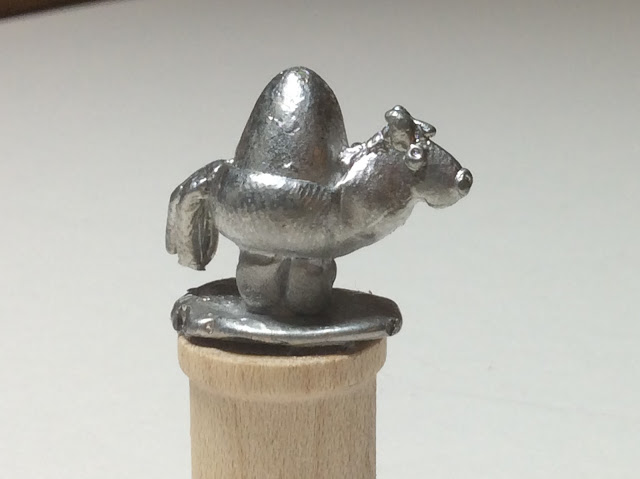The army generation table in One Hour Wargames has maximums of four for infantry and two each for cavalry, skirmishers and artillery. Doubling this requires me to have eight infantry units, four cavalry units, four skirmish units and four guns and crew. But it's never that simple.
Changes in infantry weapons during the period have no effect on the figures I need, I don't need to model the particular type of firearm they are equipped with. But the change from bronze to steel guns does need to be shown. Only Bomenburst will adopt steel guns, and only towards the end of the period, so I can put off making those for a while.
Troop quality is more of an issue. Skirmishers and artillery will be the same quality at any time. Cavalry will be represented by a variety of different types (all function the same in the rules, but it looks much better) so different levels of ability and enthusiasm can be assigned to cavarly types as required, four units is enough.
But for the infantry, quality does make a difference. I need to have line troops, guards, militia. This requires more units as each type has to be identifiable on sight. Both armies will have two units of guards, and GrosseKleinStadt will also have four militia units.
Infantry and cavalry units have eight figures each, skirmishers have four and artillery has one gun and two crew.
The Army of GrosseKleinStadt
16 Guard Infantry in 2 Units
64 Line Infantry in 8 Units
32 Militia Infantry in 4 Units
8 Curassiers in 1 Unit
16 Dragoons in 2 Units
8 Hussars in 1 Unit
16 Skirmishers in 4 Units
8 Artillery Crew and 4 Guns in 4 Units
Total: 168 figures and 4 guns in 26 units
The Army of Bomenburst
16 Guard Infantry in 2 Units
64 Line Infantry in 8 Units
8 Curassiers in 1 Unit
16 Dragoons in 2 Units
8 Hussars in 1 Unit
16 Skirmishers in 4 Units
16 Artillery Crew and 8 Guns in 8 Units
Total: 144 figures and 8 guns in 26 units
Quite an ambitious project, but achievable I think. I will be able to stage battles along the way as the forces grow, helping keep up my enthusiasm,

















































